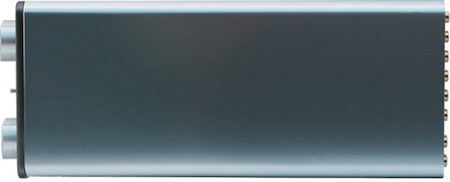What Hi-Fi? Verdict
If you can put up with the lack of features this is a terrific-sounding product
Pros
- +
Exceptional transparency
- +
terrific detail resolution and dynamic punch
- +
simplicity
Cons
- -
Poor perceived value for money
- -
basic feature list
Why you can trust What Hi-Fi?
The Townshend Audio Allegri preamplifier is designed to answer some of the main questions asked about the design of purely passive devices such as this, including how to build a device that's as near as possble to 'a straight wire with a volume control' while avoiding the heightened sensitivity to partnering equiment and even cables all too often found in such designs.

In simple terms, the modern preamp doesn't have to do much, since almost all line-level sources have more than enough output to drive a power amplifier directly. So something that simply reduces and controls level and offers source selection would do the job just fine.
That’s the thinking behind what’s known as a passive preamp, and the simplest design is nothing more than a potentiometer (essentially a variable resistor, or “volume control”, in common parlance) between the source and power amp.
This can work brilliantly, delivering transparency and resolution that conventional active designs find hard to match, but the catch is that sensitivity to the cables and partnering products used. It comes down to electrical matching – and when such things aren’t right, tonal balance and dynamics go out the window.
Sparse (but effective) features
Townshend’s Allegri aims to deliver the best of all worlds, by using autotransformers instead of variable resistance to control the signal level via its 24-step volume control. The electrical characteristics of an autotransformer means that it sidesteps system-matching issues, and should work in most set-ups without issue.
The Allegri also has six line-level inputs, and is built into a neat case, which is well made without quite having the slickness of finish that most mass-market alternatives might.
The controls, such as they are, feel nice and chunky.
Take a look inside and it’s surprisingly empty. Only two small autotransformers and a concentrated (and necessary) nest of wiring fills part of the space.
This is a product from a tiny company, and looks and feels it. Still, there’s a nice, no-nonsense aura about it.
Much the same can be said about the sound. We tried it in a variety of systems including our reference Bryston set-up and alternatives from Burmester, Audiolab and Cyrus, and it worked well throughout.
Impressive detail
Our first impression was of impressive detail, strong dynamics and unerring transparency.
Extended listening simply reinforced this impression. There’s a purity about the Allegri’s sound that’s get any other way.
It doesn’t matter whether you listen to the drama-fuelled Dark Knight OST, the beautiful Tabula Rasa by Arvo Pärt or the sheer energy of Blur’s Song 2, the Allegri shines.
It communicates the tiniest of details in an unexaggerated and unvarnished manner.
If sheer transparency to the recording is your thing, we can’t think of a similarly priced alternative we’ve heard that does it better. That said, it’s not entirely perfect.
Top-class active units such as the £20k Burmester 077 show greater sonic stability, refinement and a more spacious soundstage, not to mention remote control, headphone outputs and the option of a phono stage.
Closer in price, there are preamps from the likes of ATC, Naim and Cyrus offering similar gains (and most of the features), but in our opinion these don’t have the Allegri’s transparency or insight.
How you take to this Townshend will depend how you approach its sparse feature count and finish.
If sound is all important, we suspect you’ll be smitten.
What Hi-Fi?, founded in 1976, is the world's leading independent guide to buying and owning hi-fi and home entertainment products. Our comprehensive tests help you buy the very best for your money, with our advice sections giving you step-by-step information on how to get even more from your music and movies. Everything is tested by our dedicated team of in-house reviewers in our custom-built test rooms in London, Reading and Bath. Our coveted five-star rating and Awards are recognised all over the world as the ultimate seal of approval, so you can buy with absolute confidence.


